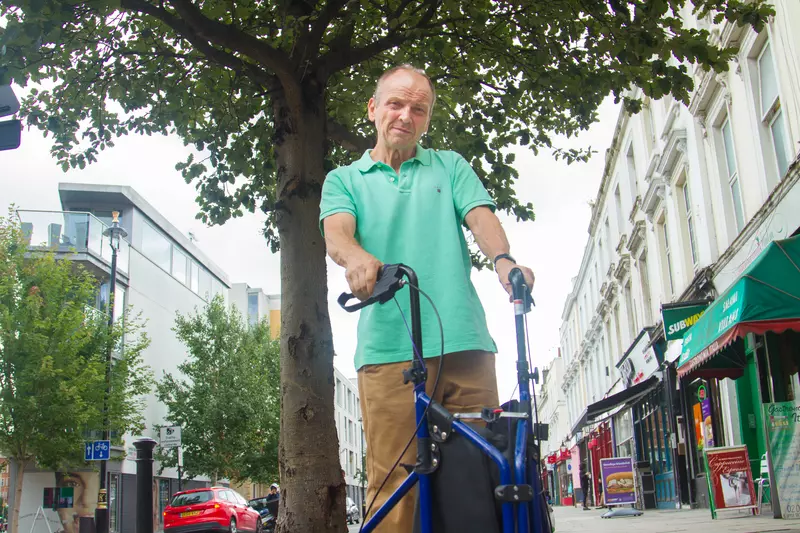Managing Parkinson's motor symptoms
Motor symptoms affect your movement. Specialist physiotherapist Bhanu Ramaswamy explains more about 3 common motor symptoms - tremor, dyskinesia (involuntary movements) and dystonia - and how you can manage them.
Tremor
A tremor (shaking) is an uncontrollable movement that affects a part of the body, for example the hand. It’s one of the main symptoms of Parkinson’s.
The most typical tremor in Parkinson’s is called a ‘pill-rolling’ rest tremor. This is because it looks like you're trying to roll a pill between your thumb and index finger.
Commonly, a Parkinson’s tremor starts in the hand before ‘spreading’ to the rest of the arm. The tremor can also affect your foot on the same side of the body, or in your jaw. Things like stress, feeling very tired and caffeine can make your tremor worse.
How to manage a tremor
There is no cure for a tremor, but drug treatments for Parkinson’s can often help to manage the symptom. Speak to your specialist or Parkinson’s nurse about this.
You can also try these exercises that may help:
- You can ease a tremor in your hand by pushing your palms firmly against each other before completing an action, like reaching into your purse.
- Chewing gum may help if you have a tremor in your jaw.
- If you have a tremor in your foot, try standing up and walking around.
As anxiety or stress can make a tremor worse, it’s important to find ways to relax. Physical activity that includes relaxation, such as yoga, may help. Some people learn to breathe deeply and to concentrate on the area of the tremor, which can reduce the shaking for a short time.

Dyskinesia (involuntary movements)
Dyskinesia are muscle movements that people with Parkinson’s can’t control. They can include twitches, jerks and twisting movements.
Dyskinesia can affect the arms, legs and torso. A lot of people with Parkinson’s experience dyskinesia after being on levodopa medication for many years.
Some people can have dyskinesia for most of the day. Others may only experience it after taking their medication or just before the next dose is due. Dyskinesia can often make people feel self-conscious.
How to manage dyskinesia
Dyskinesia can be difficult to treat. This is because if you take a lower dose of levodopa to reduce dyskinesia, your Parkinson’s symptoms may not be as well controlled and you may experience more wearing off or ‘on/off’.
If you develop dyskinesia, you should talk to your specialist or Parkinson’s nurse. They will talk to you about what changes you can make to your drug regime. This can balance treating the motor problems and controlling your Parkinson’s symptoms.
There's no evidence to suggest a specific exercise can help reduce dyskinesia. But regular physical activity is especially good for you if you have Parkinson’s and can have a positive effect on dyskinesia.

Dystonia
Dystonia happens when incorrect brain signals cause contractions in your muscles. They become tighter and shorter than normal, making them stiff. Dystonia can feel painful and uncomfortable, especially when it causes affected muscles to twist. In Parkinson’s, dystonia is often linked to levodopa.
Dystonia can often happen when you’re doing activities that involve a set posture such as writing, or if you’ve walked or run for a long distance. It can also cause you to blink more than normal.
How to manage dystonia
The first step is to try to work out what is causing your dystonia. If your dystonia is connected to levodopa, your medication regime may need adapting.
Keeping active can help keep your muscles and joints flexible. A physiotherapist or exercise professional can give you advice on the best type of exercises to do.
If you find dystonia affects your voice, speech and language therapy can be helpful. These are some other things that may also help:
- Apply pressure above the eyelids if you start blinking a lot.
- Stretch out toes and the soles of your feet before going for a run or long walk.
- Try Botox injections. These block the signals in your brain causing your dystonia, and weaken your muscles for a short period. You can speak to your specialist or Parkinson’s nurse about whether this treatment may help you.

